Alice Pike Barney
American Painter
1857 - 1931
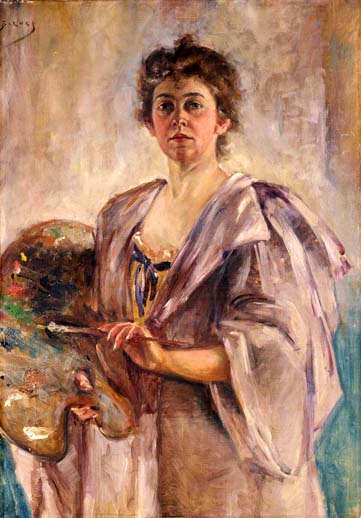
Self Portrait in Painting Robe
Date Unknown
Alice Pike Barney (born Alice Pike, January 14, 1857 - 1931) was an American painter. She was active in Washington, D.C. and worked to make Washington into a center of the arts.
Her two daughters were the writer and salon hostess Natalie Clifford Barney and the Bahá'í writer Laura Clifford Barney.
Barney's father Samuel Napthali Pike, who had made his fortune as the distiller of Magnolia brand whiskey, was a patron of the arts in Cincinnati, Ohio, where he built Pike's Opera House. His father was a German-Jew, and his mother a Dutch-Christian. Alice Pike Barney's mother was of French descent. After the family moved New York City in 1866, he built what would become the Grand Opera House at Twenty-Third Street and Eighth Avenue. Barney was the youngest of four children and the only one who fully shared her father's cultural interests; as a child she showed talent as a singer and pianist.
At 17 she became engaged to the explorer Henry Morton Stanley. Alice's mother considered the match unsuitable due to the age difference - she was 17, he 33 - and insisted that they wait to marry. While he was away on a two-year expedition in Africa, she instead married Albert Clifford Barney, son of a wealthy manufacturer of railway cars in Dayton, Ohio.
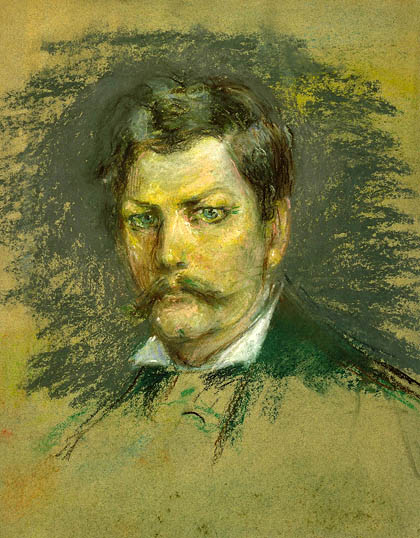
Henry M. Stanley: 1927
In 1882 Barney and her family spent the summer at New York's Long Beach Hotel, where Oscar Wilde happened to be speaking on his American lecture tour. Wilde spent the day with Alice and her daughter Natalie on the beach; their conversation changed the course of Alice's life, inspiring her to pursue art seriously despite her husband's disapproval.
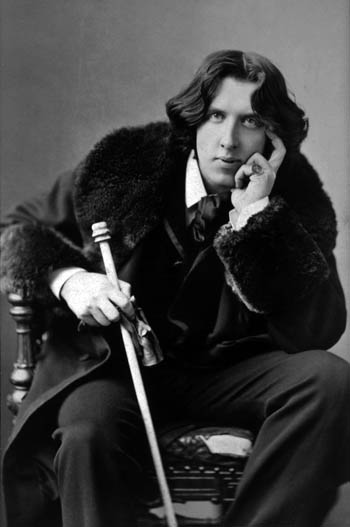
Oscar Wilde
Photograph taken in 1882 by Napoleon Sarony
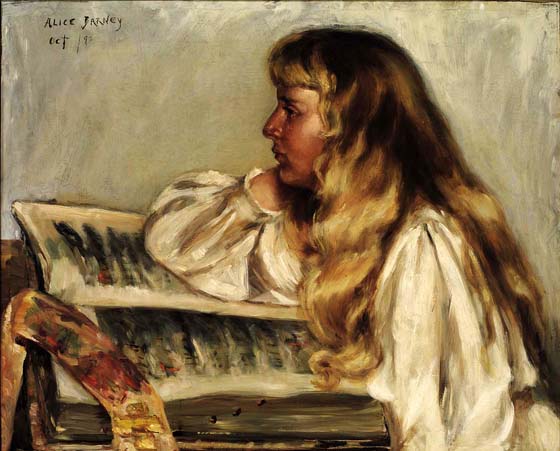
Natalie and Missal: 1890
In 1887 she travelled to Paris to be nearer her two daughters while they attended Les Ruches, a French boarding school founded by the feminist educator Marie Souvestre. While there, she studied painting with Carolus-Duran. She returned to Paris in 1896 - bringing her daughter Laura to a French hospital for treatment of leg pain from a childhood injury - and resumed her study with Carolus-Duran as well as taking lessons from the Spanish painter Claudio Castelucho. When James Abbott McNeill Whistler opened an academie, she was one of the first students. Whistler soon lost interest in teaching art and the school shut down, but he was a formative influence.
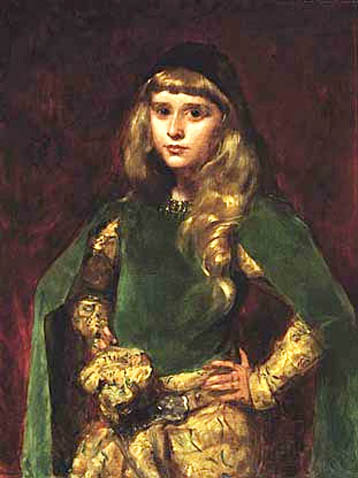
Portrait of Natalie by Carolus-Duran: ca 1886
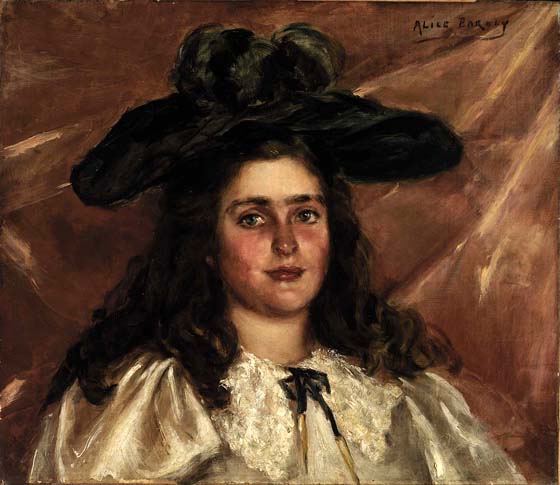
Laura Alice in Big Hat: Date Unknown

James Abbott McNeill Whistler: 1898
In 1899 she began a salon at her rented home on the Avenue Victor Hugo; regular guests included the Symbolist painters Lucien Lévy-Dhurmer, John White Alexander, and Edmond Aman-Jean, and her art began to show a Symbolist influence.
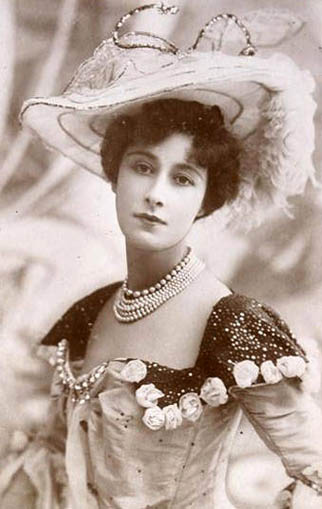
Liane de Pougy
Natalie Barney later said she knew by age 12 she was lesbian and was determined to "live openly, without hiding anything." In 1899 after seeing the courtesan Liane de Pougy at a dance hall in Paris, Barney presented herself at de Pougy's residence in a page costume and announced she was a "page of love" sent by Sappho. Although de Pougy was one of the most famous women in France, constantly sought after by wealthy and titled men, Barney's audacity charmed her. Their brief affair became the subject of de Pougy's tell-all roman à clef, Idylle Saphique (Sapphic Idyll). Published in 1901, this book became the talk of Paris, reprinted at least 69 times in its first year. Barney was soon well known as the model for one of the characters. By this time, however, the two had already broken up after quarreling repeatedly over Barney's desire to "rescue" de Pougy from her life as a courtesan.
Barney herself contributed a chapter to Idylle Saphique in which she described reclining at de Pougy's feet in a screened box at the theater, watching Sarah Bernhardt's play Hamlet. During intermission, Barney (as "Flossie") compares Hamlet's plight with that of women: "What is there for women who feel the passion for action when pitiless Destiny holds them in chains? Destiny made us women at a time when the law of men is the only law that is recognized." She also wrote Lettres à une Connue (Letters to a Woman I Have Known), her own epistolary novel about the affair. Although Barney failed to find a publisher for the book and later called it naive and clumsy, it is notable for its discussion of homosexuality, which Barney regarded as natural and compared to albinism. "My queerness," she said, "is not a vice, is not deliberate, and harms no one."
Quoted From: Wapedia - Wiki: Natalie Clifford Barney
Renée Vivien
_and_Natalie_Barney_posing_for_a_portrait_in_Directoire-era_costume.jpg)
Renée Vivien (left) and Natalie Barney posing for a portrait in Directoire-era costume
In November 1899 Natalie Barney met the poet Pauline Tarn, better known by her pen name Renée Vivien. For Vivien it was love at first sight, while Barney became fascinated with Vivien after hearing her recite one of her poems, which she described as "haunted by the desire for death." Their romantic relationship was also a creative exchange that inspired both of them to write. Barney provided a feminist theoretical framework which Vivien explored in her poetry. They adapted the imagery of the Symbolist poets along with the conventions of courtly love to describe love between women, also finding examples of heroic women in history and myth. Sappho was an especially important influence and they studied Greek so as to read the surviving fragments of her poetry in the original. Both wrote plays about her life.
Vivien saw Barney as a muse and as Barney put it, "she had found new inspiration through me, almost without knowing me." Barney felt Vivien had cast her as a femme fatale and that she wanted "to lose herself... entirely in suffering" for the sake of her art. Vivien also believed in fidelity, which Barney was unwilling to agree to. While Barney was visiting her family in Washington, D.C. in 1901, Vivien stopped answering her letters. Barney tried to get her back for years, at one point persuading a friend, operatic mezzo-soprano Emma Calvé, to sing under Vivien's window so she could throw a poem (wrapped around a bouquet of flowers) up to Vivien on her balcony. Both flowers and poem were intercepted and returned by a governess.
In 1904 she wrote Je Me Souviens (I Remember), an intensely personal prose poem about their relationship which was presented as a single handwritten copy to Vivien in an attempt to win her back. They reconciled and traveled together to Lesbos, where they lived happily together for a short time and talked about starting a school of poetry for women like the one which Sappho, according to tradition, had founded on Lesbos some 2,500 years before. However, Vivien soon got a letter from her lover Hélène (the Baroness de Zuylen de Nyevelt) and went to Constantinople thinking she would break up with her in person. Vivien planned to meet Barney in Paris afterward but instead stayed with the Baroness and this time, the breakup was permanent.
Vivien's health declined rapidly after this. According to Vivien's friend and neighbor Colette, she ate almost nothing and drank heavily, even rinsing her mouth with perfumed water to hide the smell. Colette's account has led some to call Vivien an anorexic but this diagnosis did not yet exist at the time. Vivien was also addicted to the sedative chloral hydrate. In 1908 she attempted suicide by overdosing on laudanum and died the following year. In a memoir written fifty years later Barney said "She could not be saved. Her life was a long suicide. Everything turned to dust and ashes in her hands."
Quoted From: Wapedia - Wiki: Natalie Clifford Barney
When Natalie wrote a chapbook of French poetry, Quelques Portraits-Sonnets de Femmes (Some Portrait-Sonnets of Women), Barney was pleased to provide illustrations. She did not understand the implications of the book's love poems addressed to women and had no idea that three of the four women who modeled for her were her daughter's lovers. Albert, alerted to the book's theme by a newspaper review headlined "Sappho Sings in Washington", rushed to Paris, where he bought and destroyed the publisher's remaining stock and printing plates and insisted that Barney and Natalie return with him to the family's summer home in Bar Harbor, Maine. His temper only worsened when friends forwarded him clippings from the Washington Mirror.
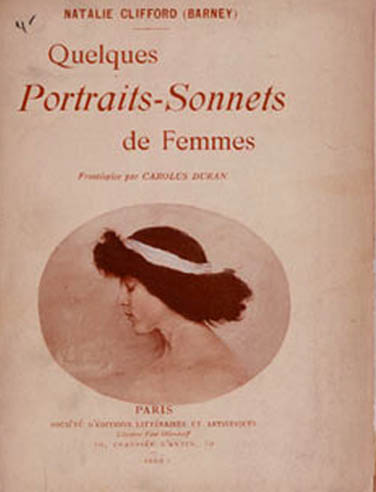
Cover of the 1900 edition of
Quelques Portraits-Sonnets de Femmes
In 1900 Natalie Barney published her first book, a collection of poems called Quelques Portraits-Sonnets de Femmes (Some Portrait-Sonnets of Women). The poems were written in traditional French verse and a formal, old-fashioned style since Barney did not care for free verse. These poems have been described as "apprentice work" but by publishing them, Barney became the first woman poet to openly write about the love of women since Sappho. Her mother contributed pastel illustrations of the poems' subjects, wholly unaware three of the four women who modeled for her were her daughter's lovers.
Reviews were generally positive and glossed over the lesbian theme of the poems, some even misrepresenting it. The Washington Mirror said Barney "writes odes to men's lips and eyes; not like a novice, either." However, a headline in a society gossip paper cried out "Sappho Sings in Washington" and this alerted her father, who bought and destroyed the publisher's remaining stock and printing plates.
Quoted From: Wapedia - Wiki: Natalie Clifford Barney
Washington, about to publish its first Social Register, was becoming more socially stratified, and Barney's background as the daughter of a whiskey distiller and granddaughter of a Jewish immigrant had made her the subject of vague insinuations in the society pages. The gossip would have no lasting effect on the Barneys' social standing, but Albert considered it a disaster. His drinking increased, as did his blood pressure, and two months later he had a heart attack. His health continued to deteriorate, and he died in 1902.
Alice Barney had solo shows at major galleries including the Corcoran Gallery of Art. In later years, she invented and patented mechanical devices, wrote and performed in several plays and an opera, and worked to promote the arts in Washington, D.C. Many of her paintings are now in the collection of the Smithsonian American Art Museum.
She converted to the Bahá'í Faith around 1900.
In 1911, at age 53, Barney married 23-year-old Christian Hemmick; their engagement resulted in worldwide press attention. They had divorced by 1920.
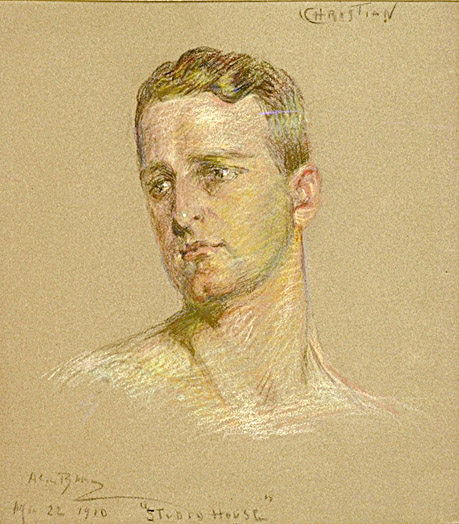
Christian: 1910
Quoted From: Alice Pike Barney - Wikipedia
Various Works of Alice Pike Barney - They are presented in no thematic or chronological order.
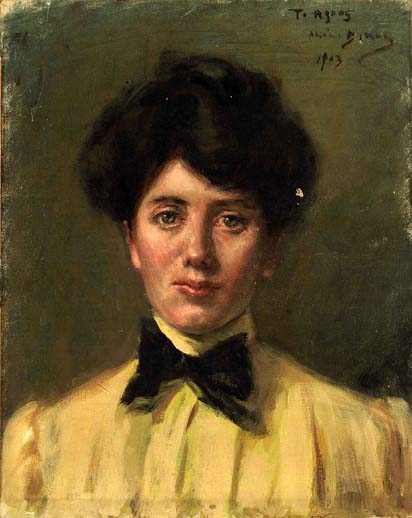
Agnes: 1903
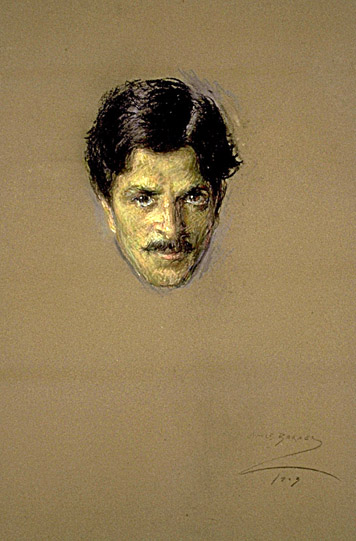
Ali Kuli Khan: 1903
Baha'i Stories: Ali-Kuli Khan becomes one of 'Abdu'l-Baha's secretaries
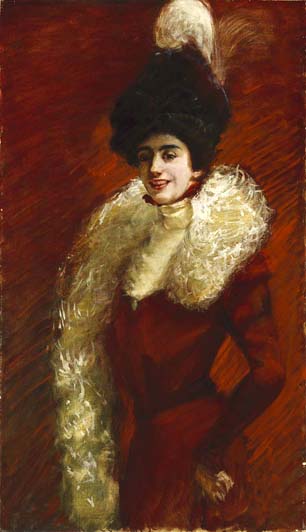
Alice Warder Garrett
Date Unknown
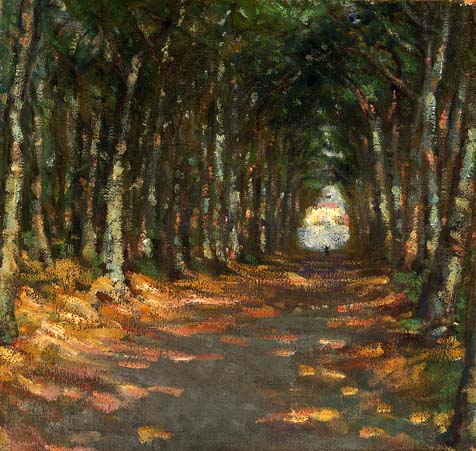
Allee dans le Parc: 1906
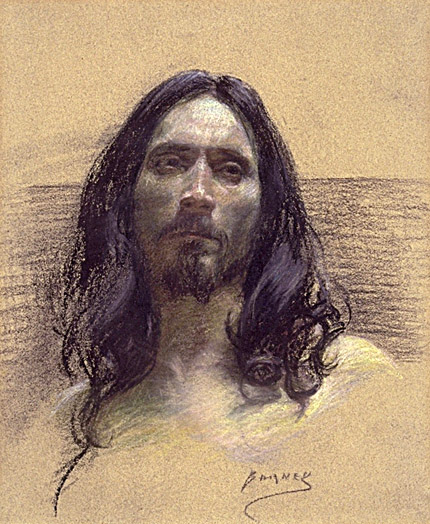
Anchorite: 1900
An Anchorite is a person who has retired into seclusion for religious reasons.
CATHOLIC ENCYCLOPEDIA: Anchorites
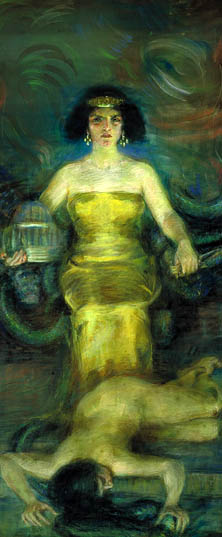
Babylon: 1904
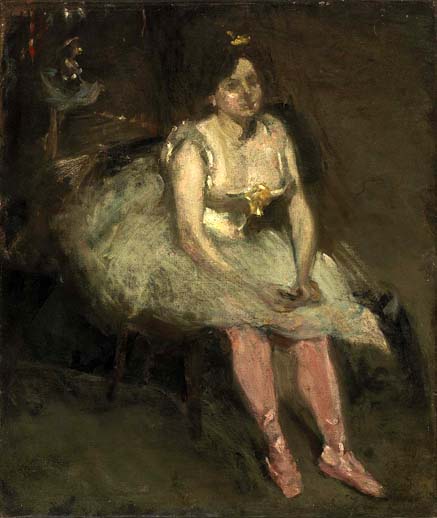
Ballerine: 1896
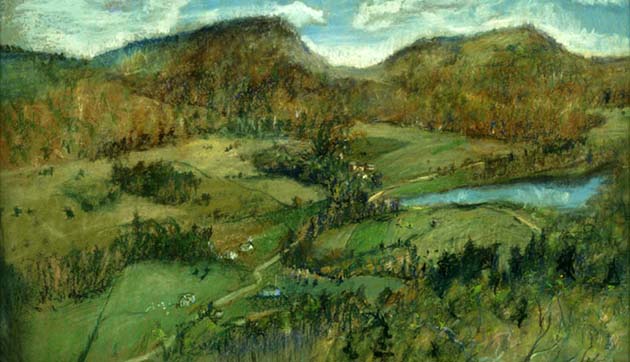
Bar Harbor: 1892
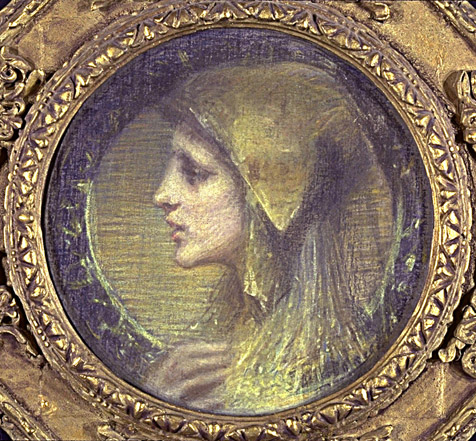
Beatrice: 1907
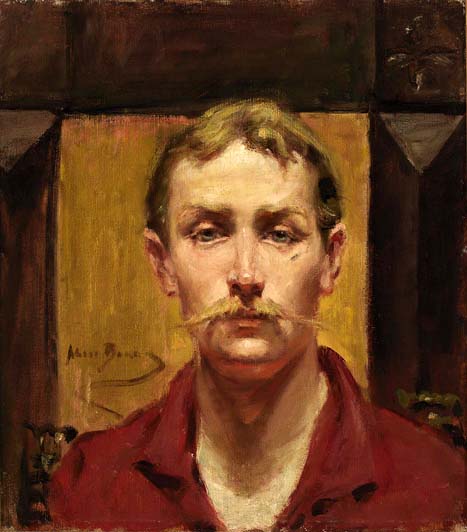
Blonde Man
Date Unknown
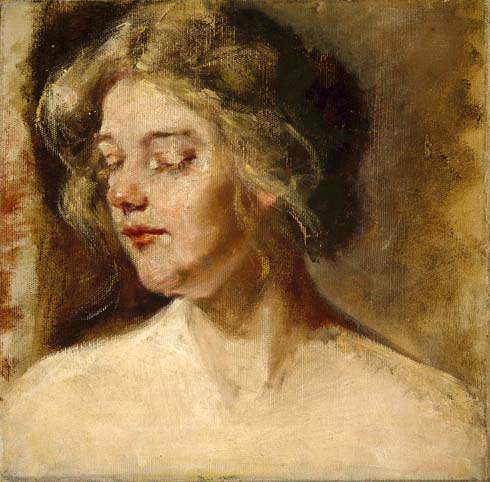
Blonde Studio Model
Date Unknown
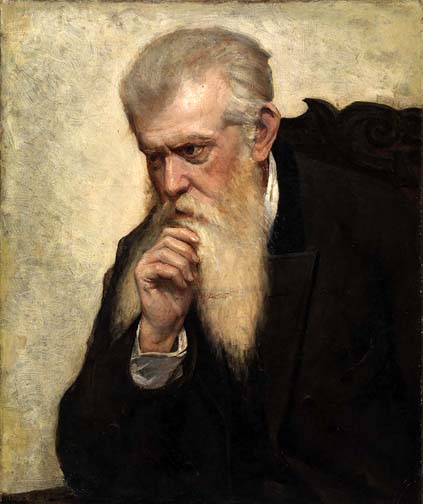
Captain Wheeler: 1892
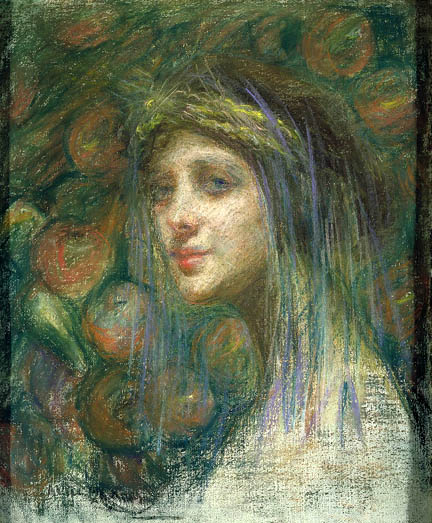
Ceres: 1901
Ceres, in Roman mythology, is equivalent to the Greek Demeter, daughter of Saturn and Rhea, wife-sister of Jupiter, mother of Proserpina by Jupiter, sister of Juno, Vesta, Neptune and Pluto, and patron of Sicily.
Ceres was the goddess of growing plants (particularly cereals) and of motherly love. She is said to have been adopted by the Romans in 496 BC during a devastating famine, when the Sibylline books advised the adoption of the Greek goddesses Demeter, Kore (Persephone) and Iacchus (possibly Dionysus).
She was personified and celebrated by women in secret rituals at the festival of Ambarvalia, held during May. There was a temple to Ceres on the Aventine Hill in Rome. Her primary festival was the Cerealia or Ludi Ceriales ("games of Ceres"), instituted in the 3rd century BC and held annually on April 12 to April 19. The worship of Ceres became particularly associated with the plebeian classes, who dominated the corn trade. Little is known about the rituals of Cerelean worship; one of the few customs which has been recorded was the peculiar practice of tying lighted brands to the tails of foxes which were then let loose in the Circus Maximus.
She was depicted in art with a scepter, a basket of flowers and fruit, and a garland made of wheat ears.
Quoted From: Ceres (mythology) - Wikipedia
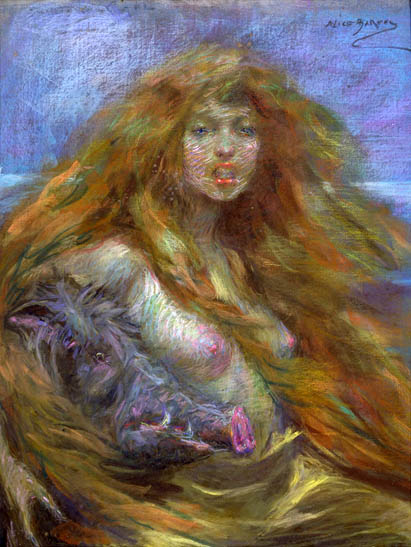
Circe
Date Unknown
Circe, daughter of the sun, was a sorceress best known for her ability to turn men into animals with her magic wand. The daughter of Perse and Helios, and whose daughter is Aega (goddess of the sun) she is remembered for her encounter with Odysseus and his men, and renowned for her knowledge of magic and poisonous herbs.
When Odysseus and his men landed in Aeaea, his crew later met with Circe and were turned into pigs. Circe's spells however had no effect on Odysseus who earlier was given an herb by Hermes to resist her power. Circe realizing she was powerless over him lifted the spell from the crew and welcomed them in her home. After about a year when Odysseus leaves she warns them of the sirens they will encounter on their journey. Circe and Odysseus also bore a child together named Telegonus who later ruled over the Tyrsenians.
Circe also has the powers for spiritual purification as she purifies the Argonauts for the murder of Apsyrtus.
Quoted From: Circe - Encyclopedia Mythica
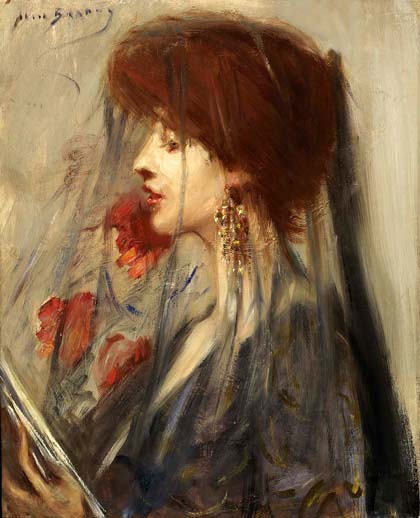
Dream Book
Date Unknown
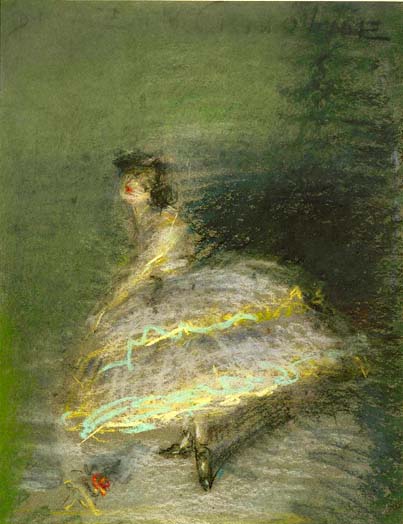
En Crinoline: 1915
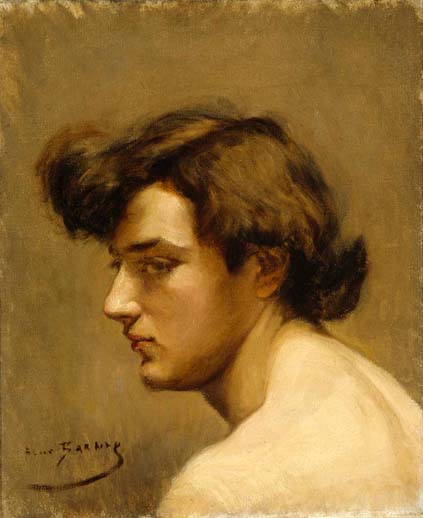
Endymion:1910
In Greek mythology, Endymion could have been a handsome Aeolian shepherd or hunter, or even a king who ruled and was said to reside at Olympia in Elis, but he was also said to reside and was venerated on Mount Latmus in Caria, on the west coast of Asia Minor.
There is confusion over the true location of Endymion, as some sources suppose that one was, or was related to, the prince of Elis, and the other was a shepherd from Caria-or, a later suggestion, an astronomer: Pliny the Elder mentions Endymion as the first human to observe the movements of the moon, which (according to Pliny) accounts for Endymion's love. As such, there have been two attributed sites of Endymion's burial: The citizens of Heracleia ad Latmo claimed that Endymion's tomb was on Mount Latmus, while the Eleans declared that it was at Olympia.
However, the lover of Selene, the moon, is attributed primarily to an Endymion who was either a shepherd or an astronomer, which profession provides justification for him to spend time beneath the moon.
Quoted From: Endymion (mythology) - Wikipedia
Endymion of John Keats: 1884
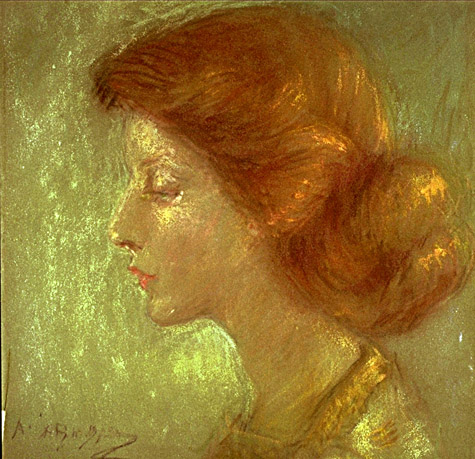
Evalina Cortland Palmer: 1911
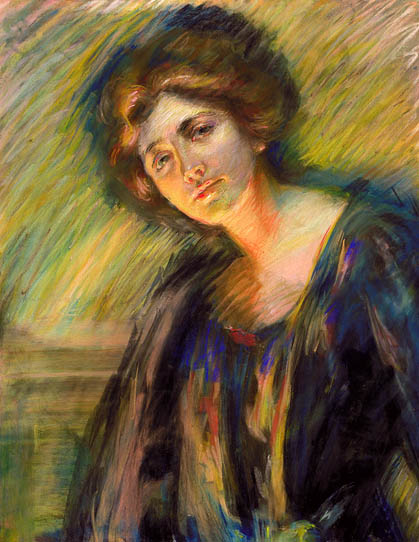
Firelight
Date Unknown
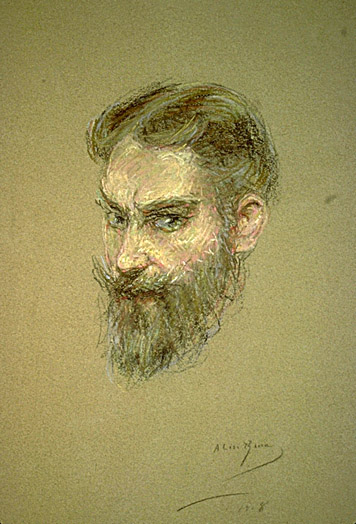
George Bernard Shaw
Date Unknown
George Bernard Shaw (1856-1950) was born in Dublin, the son of a civil servant. His education was irregular, due to his dislike of any organized training. After working in an estate agent's office for a while he moved to London as a young man (1876), where he established himself as a leading music and theatre critic in the eighties and nineties and became a prominent member of the Fabian Society, for which he composed many pamphlets. He began his literary career as a novelist; as a fervent advocate of the new theatre of Ibsen (The Quintessence of Ibsenism, 1891) he decided to write plays in order to illustrate his criticism of the English stage. His earliest dramas were called appropriately Plays Pleasant and Unpleasant (1898). Among these, Widower's Houses and Mrs. Warren's Profession savagely attack social hypocrisy, while in plays such as Arms and the Man and The Man of Destiny the criticism is less fierce. Shaw's radical rationalism, his utter disregard of conventions, his keen dialectic interest and verbal wit often turn the stage into a forum of ideas, and nowhere more openly than in the famous discourses on the Life Force, "Don Juan in Hell", the third act of the dramatization of woman's love chase of man, Man and Superman (1903).
In the plays of his later period discussion sometimes drowns the drama, in Back to Methuselah (1921), although in the same period he worked on his masterpiece Saint Joan (1923), in which he rewrites the well-known story of the French maiden and extends it from the Middle Ages to the present.
Other important plays by Shaw are Caesar and Cleopatra (1901), a historical play filled with allusions to modern times, and Androcles and the Lion (1912), in which he exercised a kind of retrospective history and from modern movements drew deductions for the Christian era. In Major Barbara (1905), one of Shaw's most successful "discussion" plays, the audience's attention is held by the power of the witty argumentation that man can achieve aesthetic salvation only through political activity, not as an individual. The Doctor's Dilemma (1906), facetiously classified as a tragedy by Shaw, is really a comedy the humor of which is directed at the medical profession. Candida (1898), with social attitudes toward sex relations as objects of his satire, and Pygmalion (1912), a witty study of phonetics as well as a clever treatment of middle-class morality and class distinction, proved some of Shaw's greatest successes on the stage. It is a combination of the dramatic, the comic, and the social corrective that gives Shaw's comedies their special flavor.
Shaw's complete works appeared in thirty-six volumes between 1930 and 1950, the year of his death.
Quoted From: George Bernard Shaw - Biography
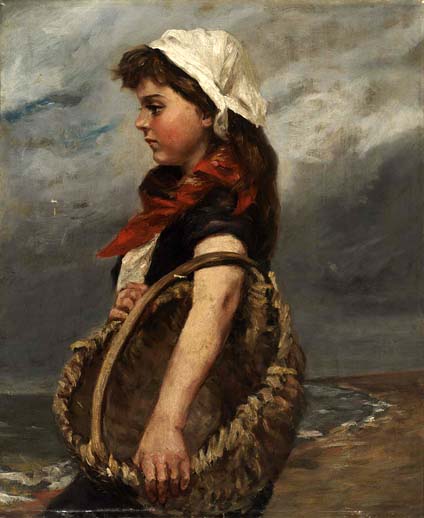
Girl with Basket: 1888
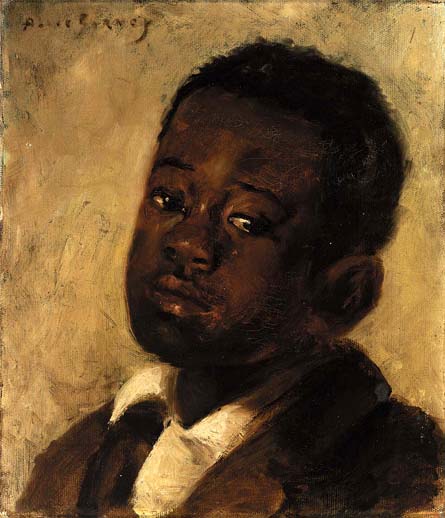
Head of a Negro Boy
Date Unknown

Henry M. Stanley: 1927
Most famous for allegedly uttering the words, "Dr. Livingstone, I presume," Henry Morton Stanley was one of the most well-known of all nineteenth-century British explorers. In his early years (as a naturalized American) he led a roving life, fighting in the American Civil War, serving in the merchant marine and the federal navy, and reporting as a journalist on the early days of frontier expansion. He became famous when the New York Herald commissioned him to "find Livingstone" in Africa.
After finding Robert Livingstone (no mean feat, since Livingstone was living in the interior of Zanzibar, where even his friends could not find him), and following in the footsteps of Livingstone, Richard Burton, John Hanning Speke, and others, Stanley went on to explore the rivers and lakes of central Africa. Through the Dark Continent (1877) is his account of those explorations. Failing to interest the British government in developing the Congo, Stanley accepted the invitation of King Leopold of Belgium to explore the region -- an expedition that led to the establishment of the "Congo Free State" under the sovereignty of King Leopold, and to Stanley's book, The Founding of the Congo Free State (1885). Stanley continued to explore and write until the end of the century, producing In Darkest Africa in 1890 and Through South Africa in 1898. He died in England in 1904.
Quoted From: Henry Morton Stanley Biography

Hippolyte Dreyfus: 1907
Biography of Hippolyte Dreyfus-Barney
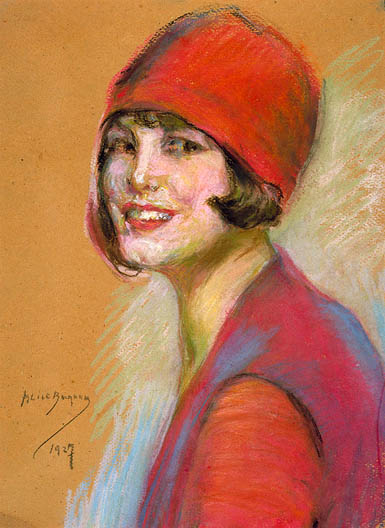
Hollywood: 1927
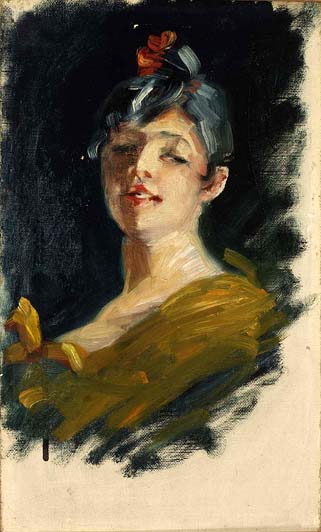
In Life
Date Unknown

In Shadow: 1910
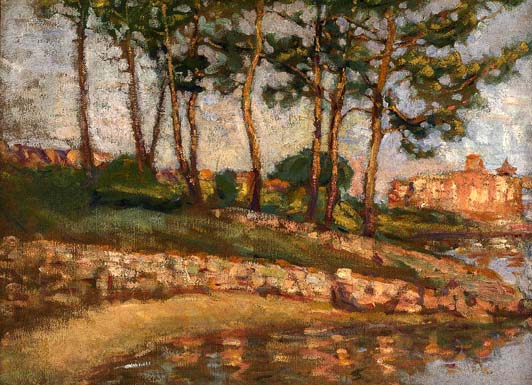
In Southern France
Date Unknown
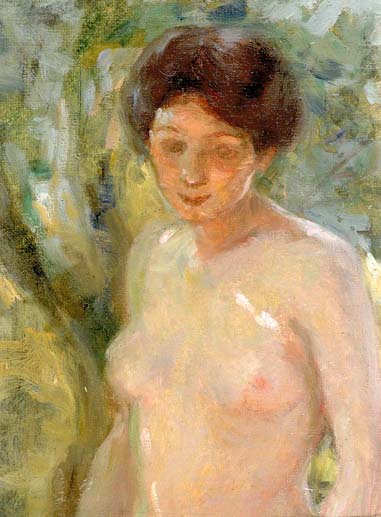
In Sunlight: 1910
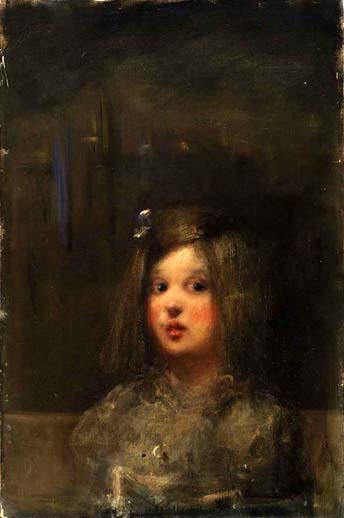
Infanta: 1887

Japanese Lullaby: 1903
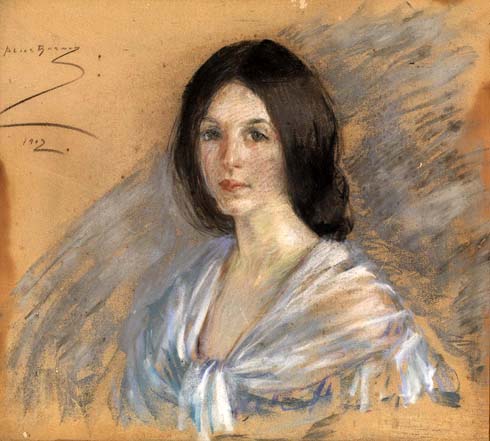
Jaqueline with Fichu: 1902

Kate Deering Ridgely: 1900
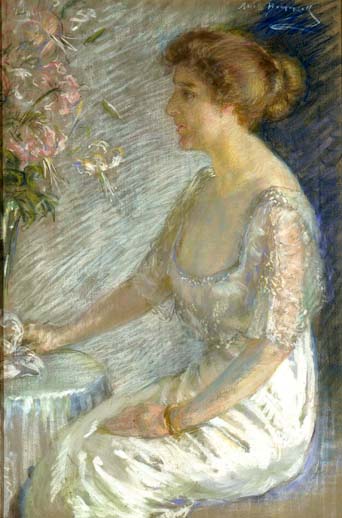
Katherine Hemmick Johnson
Date Unknown
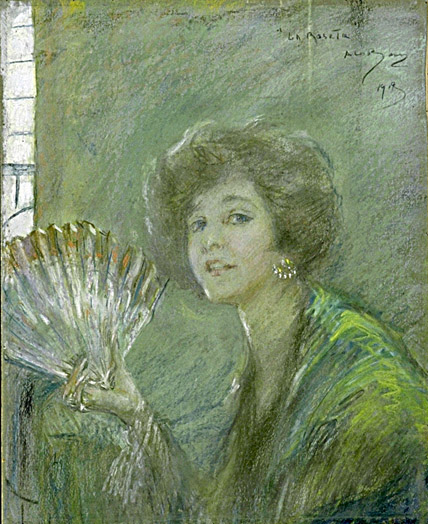
La Rosita: 1919
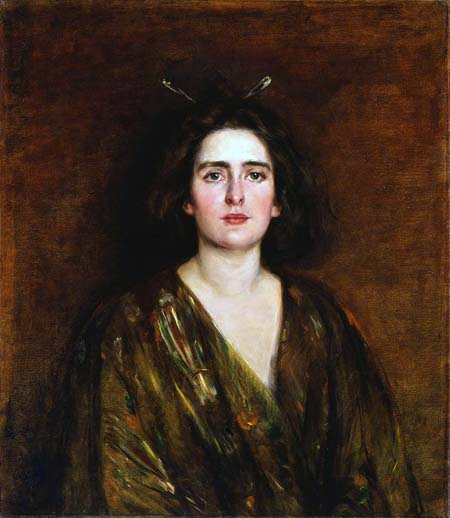
Laura at Sixteen
Date Unknown
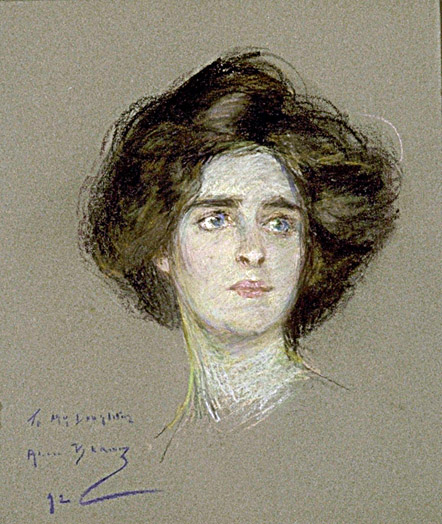
Laura Attentive: 1912
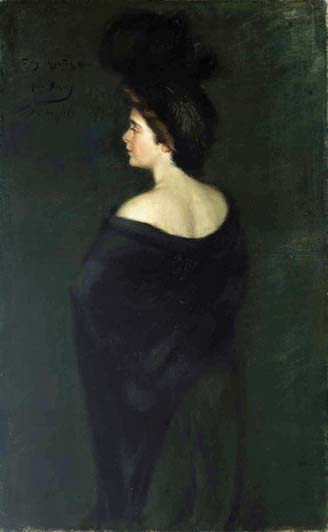
Laura in Blacks: 1899
Laura Clifford Barney (1879-1974, married name Laura Dreyfus-Barney) became a leading American Bahá'í teacher and philanthropist. She was the daughter of Albert and Alice Pike Barney, and sister of Natalie Clifford Barney. She is well known for having compiled the Bahá'í text Some Answered Questions from her interviews with `Abdu'l-Bahá.
_1892.jpg)
Medusa
(Laura Dreyfus Barney): 1892
In Greek mythology Medusa was a Gorgon, a chthonic female monster, and a daughter of Phorcys and Ceto; Only Hyginus interposes a generation and gives another chthonic pair as parents of Medusa; gazing directly upon her would turn onlookers to stone. She was beheaded by the hero Perseus, who thereafter used her head as a weapon until he gave it to the goddess Athena to place on her shield. In classical antiquity the image of the head of Medusa appeared in the evil-averting device known as the Gorgoneion.
Quoted From: Medusa - Wikipedia
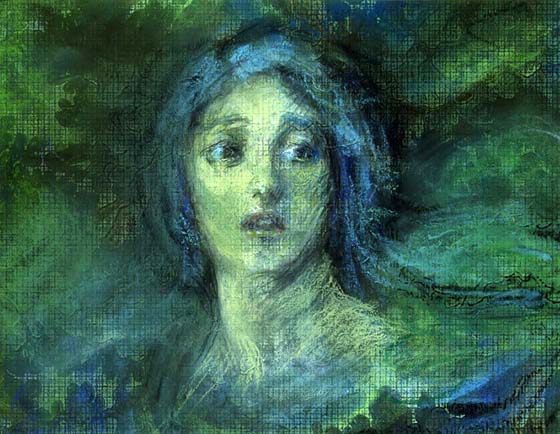
Lunar: 1921
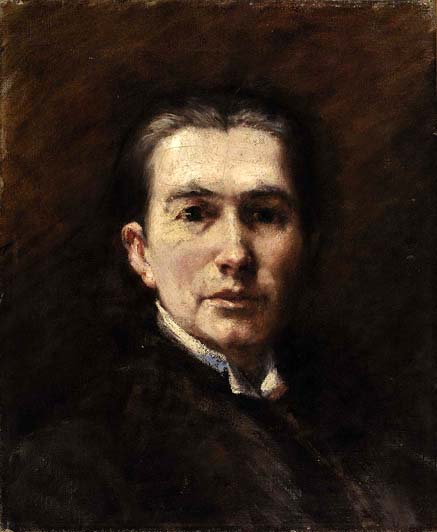
M Du Wollant: 1909
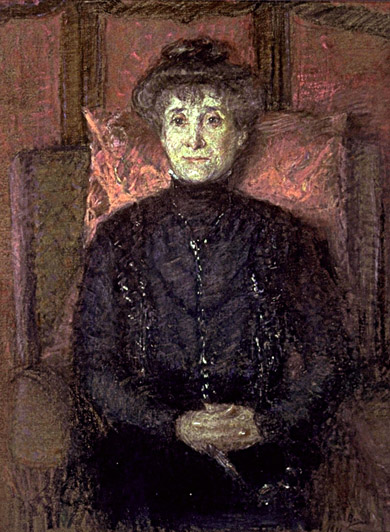
Madame Inez Dreyfus Cordozo: 1911
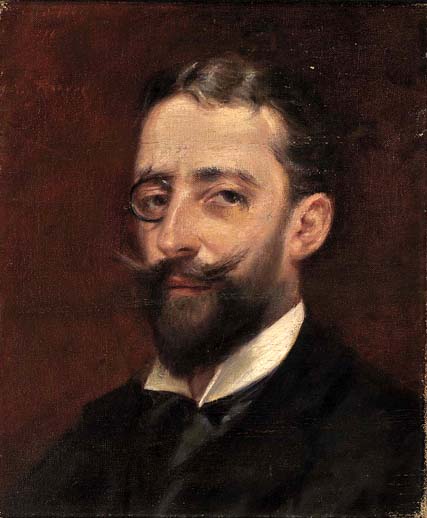
Man with Monocle Date Unknown
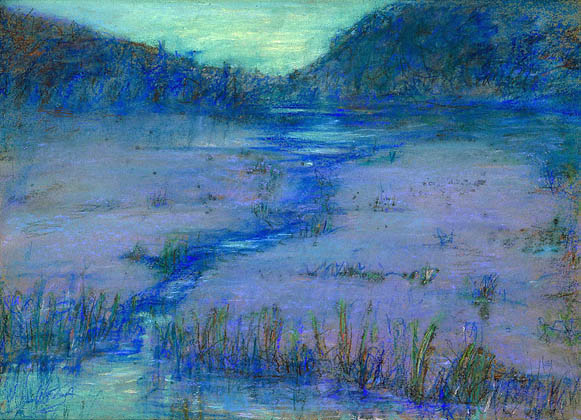
Marshlands at Sundown: 1908
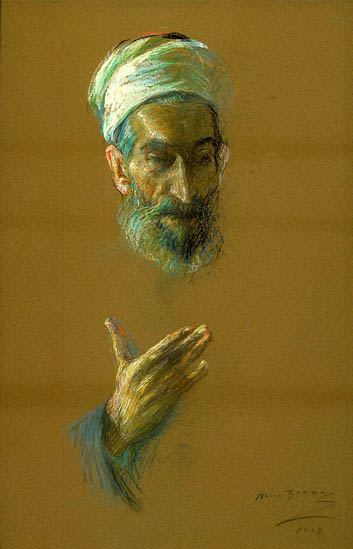
Mirza Abul Fazl: 1903
Abul Fazl, Mirza(1865-1956), was a native of Allahabad, India. Among the contemporary Muslim scholars Dr. Mirza Abul Fazl, learned in Arabic and Sanskrit, was a pioneer who took interest in the study of the chronological order of the Qur`an and invited the attention of Muslim scholars towards its importance. He was the first Muslim to present a translation of the Qur'an into English along with the original Arabic text. His first translation into English, with the Suras arranged according to the chronological sequence suggested by Theodor Nöldeke, however, differed but a little from that of John Medows Rodwell in that the placement of two Surahs he differed from Noeldeke, and because of changing the order of these two Surahs the arrangement of eight Surahs had to be changed, which was published in two volumes with Arabic text and English rendering in 1910. The use of Arabic metal type, instead of litho, was a further improvement.
His last edition of "The Koran in English" appeared in 1955, a year before he died in May 1956, at the age of 91.
Dr. Hashim Amir Ali, dean of agriculture at Osmania University, Hyderabad, was his disciple of prodigious caliber.
Quoted From: Mirza Abul Fazl - Wikipedia
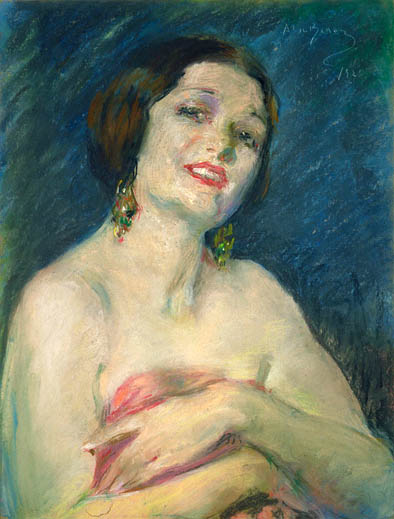
Model Holding Drapery: 1929
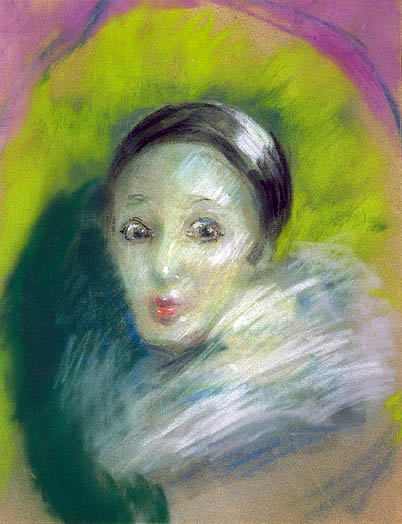
Moon Madness: 1928
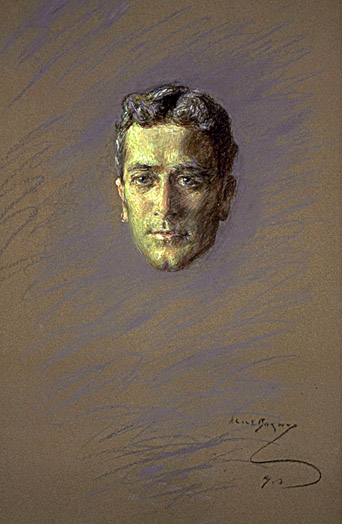
Mr. Francis Nye: 1903
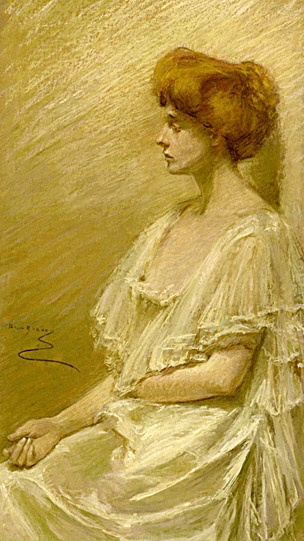
Mrs Fleming Newbold
Date Unknow
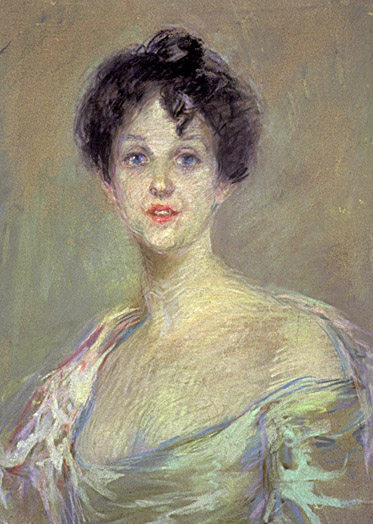
Mrs. Pansy Cotton: 1903
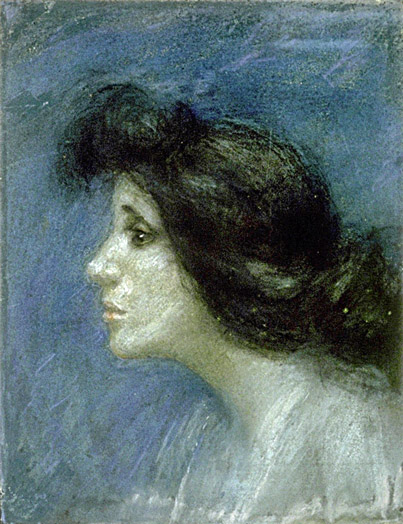
Mrs. Patrick Campbell: 1898
Mrs. Patrick Campbell (1865 - 1940) was a British stage actress. Campbell was born Beatrice Stella Tanner in Kensington, London, to John Tanner and Maria Luigia Giovanna, daughter of Count Angelo Romanini. She studied for a short time at the Guildhall School of Music.
Her first marriage, from which she took the name by which she is generally known, produced two children, Alan Urquhart ('Beo') and Stella, and ended with the death of her first husband in the Boer War in 1900.
Fourteen years later, Campbell became the second wife of George Cornwallis-West, a dashing writer and soldier previously married to Jennie Jerome, the mother of Sir Winston Churchill.
She was well-known as an amateur before she made her stage debut in 1888 at the Alexandra Theatre, Liverpool, four years after her marriage to Patrick Campbell. In March, 1890, she appeared in London at the Adelphi, where she afterward played again in 1891-93. She became successful as a result of starring in Sir Arthur Wing Pinero's play, The Second Mrs Tanqueray, in 1893, at St. James's Theatre where she also appeared in 1894 in The Masqueraders. As Kate Cloud in John-a-Dreams, produced by Beerbohm Tree at the Haymarket in 1894, she made another success, and again as Agnes in The Notorious Mrs. Ebbsmith at the Garrick (1895). Among her other performances were those in Fédora (1895), Little Eyolf (1896), and her notable performances with Forbes-Robertson at the Lyceum in the rôles of Juliet in Romeo and Juliet, Ophelia in Hamlet, and Lady Macbeth (1895-98) in "Macbeth".
In 1900, Campbell made her debut performance on Broadway in New York City in Magda, a marked success. Subsequent Broadway roles included The Joy of Living (1902), as Melisande to the Pelleas of Sarah Bernhardt in Pelléas et Mélisande (1904), Hedda Gabler (1907), The Thunderbolt (1908), Lady Patricia (1911), Bella Donna (1911), and George Bernard Shaw's Pygmalion (1914). She would return to perform there on a number of occasions until 1930. Despite her second marriage, to George Cornwallis-West, she continued to use the stage name "Mrs. Patrick Campbell".
Illustration for Pygmalion, depicting Mrs. Campbell as Eliza. In 1914, she played Eliza Doolittle in the original production of Shaw's Pygmalion; though much too old for the part at 49, she was the obvious choice, being by far the biggest name on the London stage, and Shaw would have seen it no other way since he wrote the play for her in particular.
In her later years, Campbell made notable appearances in motion pictures, including One More River (1934), Riptide (1934), and Crime and Punishment (1935).
Quoted From: Mrs. Patrick Campbell - Wikipedia
_1902.jpg)
Lucifer
(Natalie Clifford Barney): 1902
Why Natalie's mother chose this depiction of her daughter - I have no idea? Lucifer means the bringer or bearer of light. It is the light that brings 'Enlightenment' to each of us. In the Classical World it was associated with Diana, the sister of Apollo. Mea Culpa - I must confess my ignorance because I do not know how or why 'Lucifer' is perceived as an attribute of evil (Satan). I think it is quite a stretch.
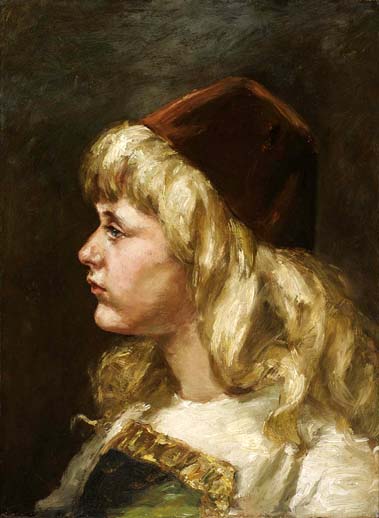
Natalie at Seven: 1883
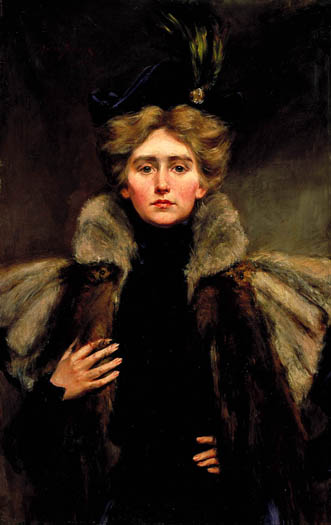
Natalie in Fur Cape: 1897
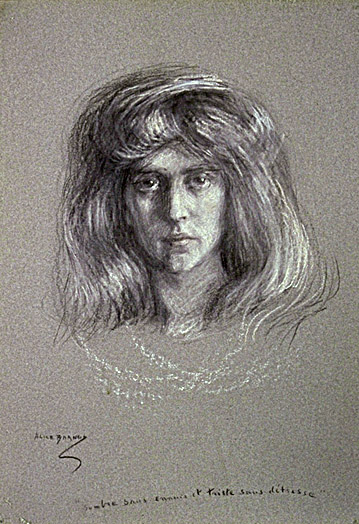
Natalie with Flowing Hair: 1900
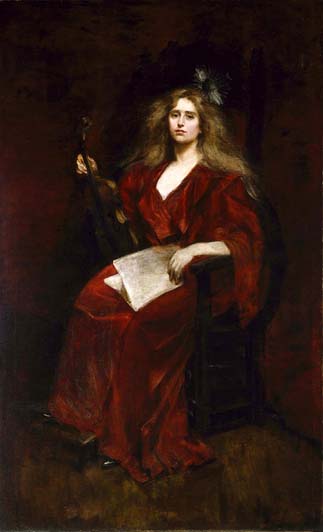
Natalie with Violin
Date Unknown
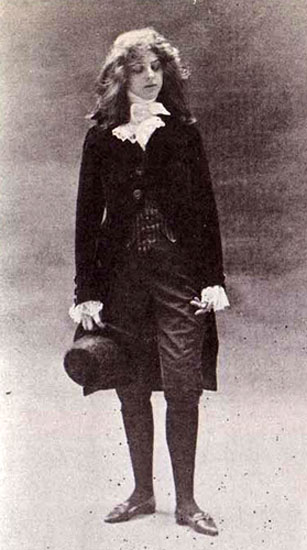
Pauline Tarn
aka Renee Vivien: 1877-1909
THE RENÉE VIVIEN TRANSLATION PROJECT
(Making Renée Viven accessible to the English-Speaking World)
For some years now, I've been translating the work of the symbolist poet and writer, Pauline Tarn, known as Renée Vivien, from French into English.
Some of this has already been done in the '70s and '80's: A Woman Appeared to Me, At the Sweet Hour of Hand in Hand, The Woman of the Wolf, and a collection of poems selected from Vivien's extensive oeuvre, called The Muse of the Violets. I am most grateful to, and respectful of, the translators who have come before me: Jeanette Foster, Margaret Porter, Catherine Kroger, Sandia Belgrade, Karla Jay, and Yvonne M. Klein.
I became interested in her when I found an anthology of The Ladder at a yard sale which had compiled a list of historically important Lesbians, many of them writers. Her picture (the one above these paragraphs) captivated me immediately, and the caption read: Forgotten Lesbian Poet. The scant information given ended with an entreaty that her work be translated before it was too late.
I found and read all the translated volumes, and waited for the further translations which I was sure would follow. Living as I do in Toronto, Canada, her original books in French were unavailable to me then, since she had lived and worked in Paris, France. I waited in vain.
With the arrival of the internet, all that changed. Able at last to research Vivien properly, I found bookstores in Paris, France from whom I could order her original books, notably Les Amazones, run by Chantal Bigot (merci, Chantal!). At first I translated the work in order to better understand it, but then found I had a knack for it. I tried getting the poems to rhyme, and found I had a knack for that, too (at least I think I do). So, I became the one I had waited for.
Now I have translated, in a literal version, all the prose and poetic works she wrote under the name Renée Vivien, excluding the works already transposed into English by the group of aforementioned translators. With all due respect to them, I'm in the process of going over these works and re-translating them in my own way. A Woman Appeared to Me will be slightly different since I'm working from the second version, which was a little less harsh in its depiction of her first lover, Natalie Barney.
After this, all the originally rhyming poetry will be re-set in rhyme, keeping to the original rhythm as closely as is possible. Her first book, Etudes and Preludes, and the collection of poems taken from her pre-1907 work, Songs for My Shadow, have both been set into rhyme already. The prose work will published separately in volumes of its own.
I will keep posting the progression of the project, presenting examples as seems fitting. Keep scrolling down to read samples of current translations.
The writing published under the names Paule Riversdale and Hélène de Zuylen de Nyevelt, which were collaborations between Renée and her second lover Hélène (although some believe most or all of it was by Renée alone) will be translated next, and examples of this posted as well, for comparison.
- Melanie Davis
Who was Renée Vivien?

Pauline Tarn
Pauline Mary Tarn was born on June 11, 1877 in Paddington, England to John and Mary Tarn; her father had inherited a fortune from the family merchant trade. They lived mainly in Paris, France until the death of her father in 1886, when Mary brought Pauline and her little sister Antoinette back to England.
Pauline, a highly strung, sensitive girl, was devastated by both the loss of her father and the loss of her country, for she considered herself French and hated what she felt to be the emotional coldness of England. It didn't help that her mother never gave her much affection, preferring her younger daughter. Isolated from childhood friends, Pauline withdrew into the world of literature, and began to envision for herself a future as a writer - in Paris! Her early poems and journals have been preserved, attesting to her remarkably precocious ambition and talent.
Life at home was difficult. She met a poet, Amédée Moullé, the father of a friend, and they began a correspondence. Inspired, she decided to become a poet also, but the friendship took an unexpected turn when the married, middle-aged Moullé proposed "marriage" to her! She was tempted by this dream of freedom, and actually ran away from home, but was caught and returned. Her mother, perhaps wanting to get her hands on Pauline's inheritance, tried to have her declared insane. Fortunately the court ruled in Pauline's favour: she was made a ward of the state and placed in lodgings until she came of age at 21... a situation which was safe but lonely.
With her inheritance came the ability to return to Paris and start over. She decided on the pen name Renée Vivien, symbolizing her rebirth, and moved into the family's previous apartment to focus on her writing, which would remain exclusively in French. She was reunited with her close girlhood friend, Violet Shillito, who introduced her to the American heiress Natalie Barney.
This was a turning point in Renée's life, for Natalie was a unique, strong-willed individual who struck Renée as being the harbinger of her destiny. The two fell deeply in love, but love meant very different things to each of them. Natalie, also in her 20s, had led a very different life, one of self-assurance and independence. She knew she was a confirmed Lesbian from an early age, and initiated Renée into her world, introducing her to the work of Sappho. But Renée was a romantic, and Natalie was polyamorous; Renée left for her own emotional preservation, but remained full of regret. Her writing practically bursts with works inspired by all aspects of their love and difficulties. For her part, Natalie never ceased pursuing Renée, hoping to win her back, and at times almost succeeding.
Compounding the rupture was the sudden illness and death of Violette Shillito; Renée had neglected their friendship in her preoccupation with Natalie, and was overwhelmed with guilt, blaming both herself and Natalie. This happened just as her first book, Études et Préludes, was being published, making complete enjoyment of her first success impossible.
In 1902, Renée met her next lover, Hélène de Zuylen de Nyevelt, a wealthy baroness. With Hélène, she found the maternal love that had eluded her all her life, but this was not a perfect situation either. Hélène was married with children, and their relationship had to be kept quiet. Still, Renée felt secure enough to continue her writing, and produced a staggering volume of work. They published books together under a pseudonym, Paul Riversdale, and also under Hélène's name.
In 1907, Hélène left Renée, who had not been faithful either, for another woman. Renée had been taking the opiate chloral hydrate since her teens for insomnia, and was addicted to the drug, which was by this time attacking her stomach, making eating difficult. She was further weakened by heavy alcohol use, deliberate fasting, and financial worries. She had always coped with her losses and disappointments throughout life by romanticizing death as a sort of deliverance, which made not caring for herself seem a valid choice. An unsuccessful suicide attempt by laudanum in 1908 left her partially paralyzed and easy prey for the pneumonia that took her on November 18, 1909, when she was just 32.
Her publishers made sure that most of the work left with them was published posthumously, and her total works list 17 volumes of poetry (not including compilations), and 16 volumes of prose, under her various pseudonyms. In addition, there are youthful poems, journals, and the usual bulky correspondence of a writer.
Renée Vivien's legacy is that she was expressing herself in a very narrow-minded time and place as a female thinker, and presenting her Lesbianism as one of many natural states that simply exist. She also reached back in time to the world of Sappho and other ancient female figures, building poems and stories based on their ideas and images, breathing her own experience into classical forms and fanciful visions.
In turn, her work provides a springboard for the future; she was unafraid to speak of her own despair, her sorrows, her perceptions of a world full of injustice and cruelty, and her dreams for a better world. Like many other female writers and artists of the early 20th century, it has taken time for the world to catch up to her. She thought in particular of the women who would come after her and speaks directly to them.
Some Samples Translations from ETUDES and PRELUDES:
Sad BACCHANTE
Day no longer pierces, with proud arrow and lance,
The woods, amazing in their beauty nocturnal.
This is the turbid hour when Bacchantes dance,
Amidst oppressive rhythms, languid and vernal.
Their hair tangles, dripping with the blood of the vines;
Their lively feet, like the wings of the wind, are light,
And their rosy flesh, the suppleness of their lines,
Imbues the forest with ever-shifting delight.
The youngest sings a song which calls to mind a wail:
Her amorous breast, with deep sobbing, is heavy.
She is not at all like the others - she is pale.
Her face has the stormy bitterness of the sea.
The wine, where the sun of the season will persist,
No longer brings generous oblivion now;
She is half-drunk, but her sorrow will not desist
And a wreath of dark leaves surrounds her pale brow.
To all in her, false gaiety brings weariness,
And the presentiment of cold and hard daybreak
Comes to spoil the glowing sweetness of the caress.
Among the festive roses she dreams, though awake.
What she remembers are the kisses they forget...
She cannot learn to desire without feeling grief,
She who gazes still, with melancholy beset,
At flowers dying after night orgies, so brief.
CHANSON
In pleated robes, long and flowing
Like all chimeras, gleaming bright
The bloom of spring to me you bring
Within your hands, so fair and light.
I dread that thrill, pearly and fresh;
Your fragile breast, I do not touch;
Trembling before your sacred flesh,
I dread your charming mouth as much!
To God, I feel my soul allies
When, underneath my proud embrace
The sweet blue bruising of your eyes
Extinguishes, without a trace.
But then, so white in my arms' bonds,
At my love-cry, faint and devout,
You smile and you give no response,
Your closed eyes freezing my soul out...
Spectral remorse still makes me dread,
Which ecstasy cannot suppress,
That you, somehow, may be wounded
By a spontaneous caress.
NIGHT
The light, in throes of agony, dies at your knee,
Come, o you whose guarded face, so lovely to see,
Carries dejection from years heavy and jaded:
Come, with your deadly welts turning pale, in distress,
With no other scent in the long folds of your dress
Than the breath of flowers which have long since faded.
Come, with your unrouged lips that ignite my desires,
Without rings, - neither rubies, opals, nor sapphires
Dishonoring your fingers, milky as the moon,
And from your eyes put mirrored reflections to flight
For it is here: the simple, chaste hour of the night
When hues can oppress, and luxury importune.
Yield up all your chagrin to eternal delight,
Exhale in a profound cry your suffering blight,
All those events of the past, so cruel and senseless,
Leave them to death, to the distance and to silence
In the dream which to strife gives such sweet condolence;
To the ancient fever of speech: forgetfulness.
I will kiss your hands and your divine naked feet;
Our hearts will cry out for the neglect that they meet,
Will decry the vile words and base gestures anew
These flights will linger in peaceful security
You will join your hands in their mystic purity,
And, in the soul-filled shadows, I will adore you.
I HAVE RUINED MY HEART
I have ruined my heart, devastated my soul
And a beggar of love is what I am today:
The memories, like filthy vermin, take their toll,
Gnaw at me in the implacable face of day.
I have ruined my heart, devastated my soul
And of fate, I implore shamefully, without cease,
A reflection of your eyes: a divine caprice;
O fugitive form, perfumed pallor that hovers
So prodigal, so abundant among lovers!
I have looked endlessly for your gaze in strange eyes,
I have searched for your kiss on ephemeral lips;
Like a vine in the orchard, flushed by the sun's rise,
Floating on Bacchic laughter which rises and dips,
I have looked endlessly for your gaze in strange eyes
Without freeing my heart from your harsh caresses.
And thus, like the sighing of plaintive mistresses
Who weep at night for a summer without return,
In laments I hear echos of love-words which yearn.
O form so fugitive, O pallor so perfumed,
Inconstant sweetness which destiny sought to cease,
Abundant and prodigal lover who once bloomed,
I have lost your sweet smile to the divine caprice;
O form so fugitive, O pallor so perfumed,
You have turned me to a beggar of love today
Exposed in the implacable face of the day
The stark grief of wretched misery takes its toll
I have ruined my heart, devastated my soul.
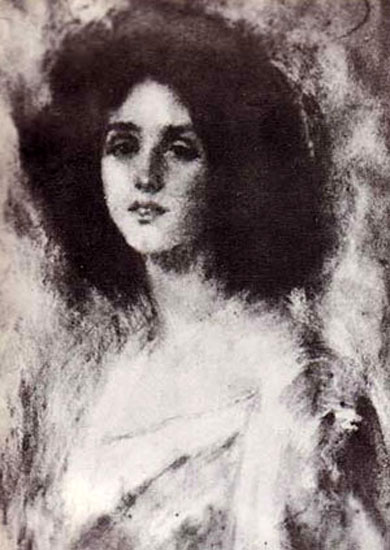
Portrait of Renee Vivien
by Alice Pike Barney, Natalie's Mother
Source: From the Renée Vivien Page
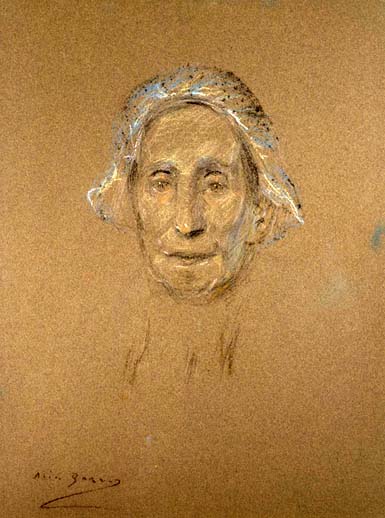
Near the End: 1903
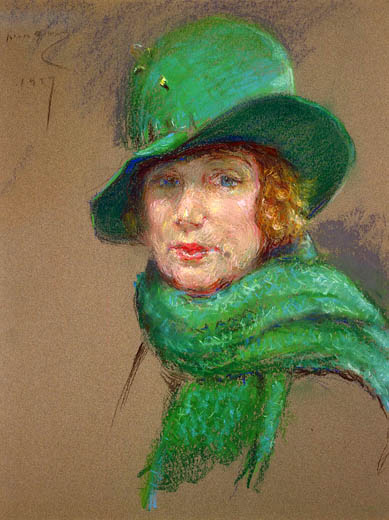
Odette Tyler Shepherd: 1927
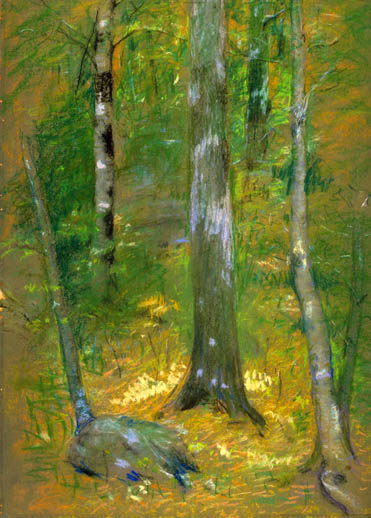
Onteora: 1903
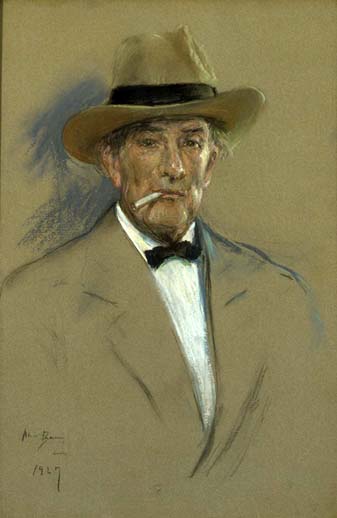
R. D. Shepherd: 1927

Ruth St Denis: 1910
Ruth St. Denis (1879 - 1968) was an early modern dance pioneer. Ruth St. Denis founded Adelphi University's dance program in 1938 which was the one of the first dance departments in an American university. It has since become a cornerstone of Adelphi's Department of Performing Arts. Ruth St. Denis founded Adelphi University's dance program in 1938 which was the one of the first dance departments in an American university. It has since become a cornerstone of Adelphi's Department of Performing Arts.
Her early works are indicative of her interests in exotic mysticism and spirituality. Many companies currently include a collection of her signature solos in their repertoires, including the programme, "The Art of the Solo," a showcase of famous solos of modern dance pioneers. Several early St. Denis solos (including "Incense" and "The Legend of the Peacock") were presented on September 29, 2006, at the Baltimore Museum of Art. A centennial salute was scheduled with the revival premiere of St. Denis' "Radha," commissioned by Countess Anastasia Thamakis of Greece. The program's director, Mino Nicolas, has been instrumental in the revival of these key solos.
One of her more famous pupils was Martha Graham, who attended Ms. St. Denis' school of dance, Denishawn, that she had started with her husband, Ted Shawn. Doris Humphrey and Charles Weidman also studied at Denis Shawn, and Graham, Humphrey, Weidman and the future silent film star Louise Brooks all performed as dancers with the Denishawn company. Ruth St. Denis and Ted Shawn were also instrumental in creating the legendary dance festival, Jacob's Pillow.
For many years, Denis taught dance at a studio in Hollywood, California just north of the Hollywood Bowl. In 1963 she teamed with Raymond DeArmond Bowman to bring the first full-length Balinese Shadow Puppet play to the United States. The performance was held at her studio and lasted more than 8 hours.
Denis was inducted into the National Museum of Dance C.V. Whitney Hall of Fame in 1987.
Quoted From: Ruth St. Denis - Wikipedia
Self Portraits of Alice Pike Barney

Self Portrait: 1909
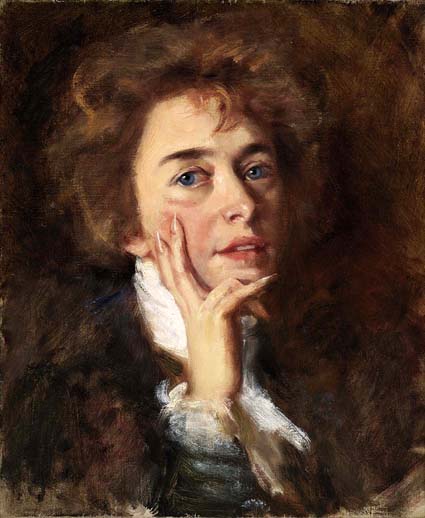
Self Portrait with Jabot
Date Unknown
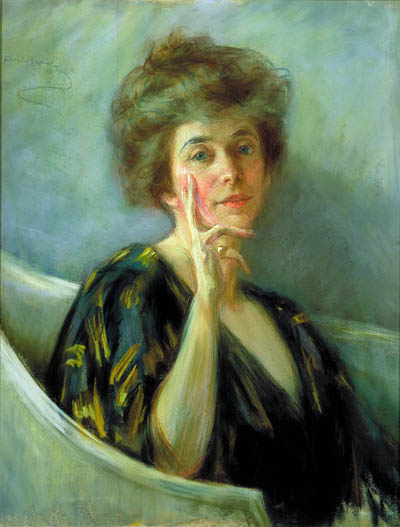
Self Portrait in Painting Robe: 1895
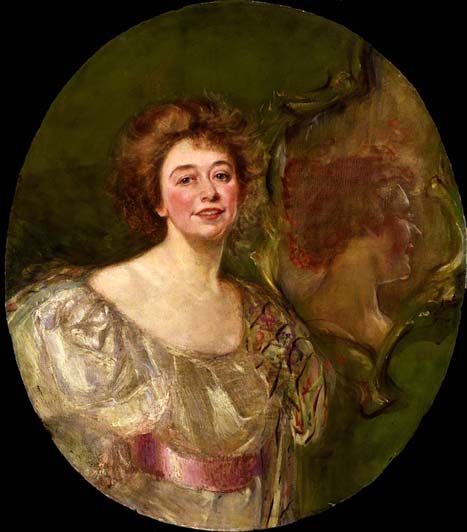
Self Portrai Reflected in Mirror
Date Unknown

Self Portrait with Hat and Veil
Date Unknow
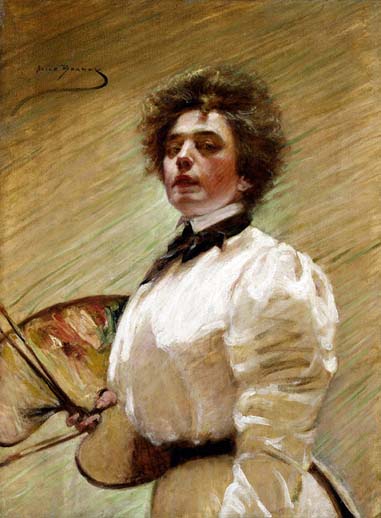
Self Portrait with Palette: 1906
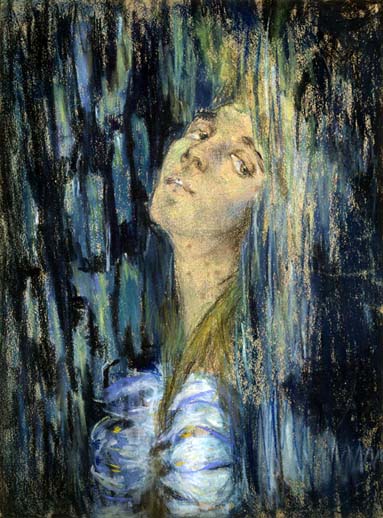
Ophelia: 1909
"There's rosemary, that's for remembrance; pray,
love, remember: and there is pansies. that's for thoughts.
There's fennel for you, and columbines: there's rue
for you; and here's some for me: we may call it
herb-grace o' Sundays: O you must wear your rue with
a difference. There's a daisy: I would give you
some violets, but they withered all when my father
died: they say he made a good end,--"
From Act IV, Scene V of William Shakespeare's Hamlet,
printed on the frame of Arthur Hughes' painting Ophelia
Commentary/Scholarly Articles on Ophelia
"Whereas for Hamlet madness is metaphysical, linked with culture, for Ophelia it is a product of the female body and female nature. . . . Ophelia's virginal and vacant white is contrasted with Hamlet's scholar's garb, his 'suits of solemn black.' Her flowers suggest the discordant double images of female sexuality as both innocent blossoming and whorish contamination; she is the 'green girl' of pastoral, the virginal 'Rose of May' and the sexually explicit madwoman who, in giving away her wild flowers and herbs, is symbolically deflowering herself. . . . The mad Ophelia's bawdy songs and verbal license, while they give her access to 'an entirely different range of experience' from what she is allowed as the dutiful daughter, seem to be her one sanctioned form of self-assertion as a woman, quickly followed, as if in retribution, by her death."
Gender and Identity in Hamlet: A Modern Interpretation of Ophelia
The Huntington Botanical Gardens - The Shakespeare Garden
Mrs. Jameson - Essay on Ophelia
Mary Cowden Clarke - Girlhood of Ophelia
Source - Quoted From: The Ophelia Page
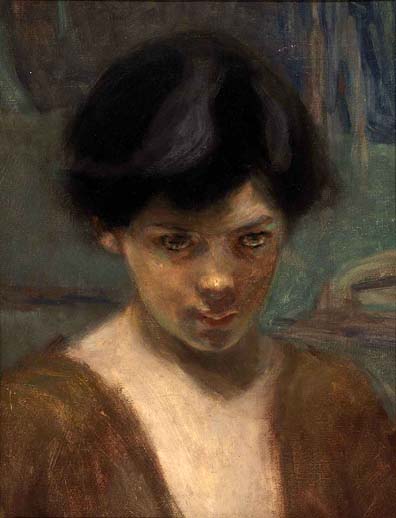
Study - Head of a Boy
Date Unknown

Study in Auburn: 1904
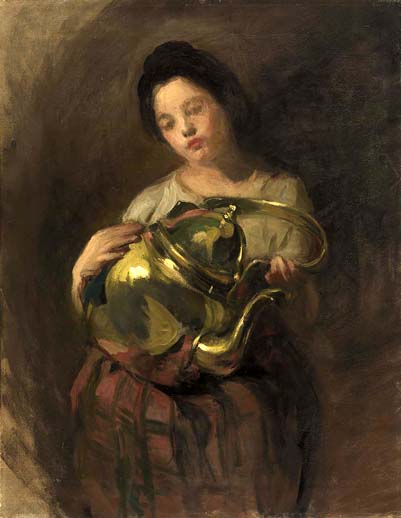
The Brass Kettle: 1890
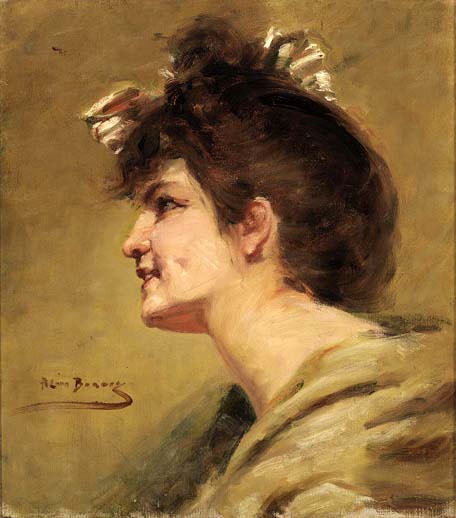
The Dimple: 1890
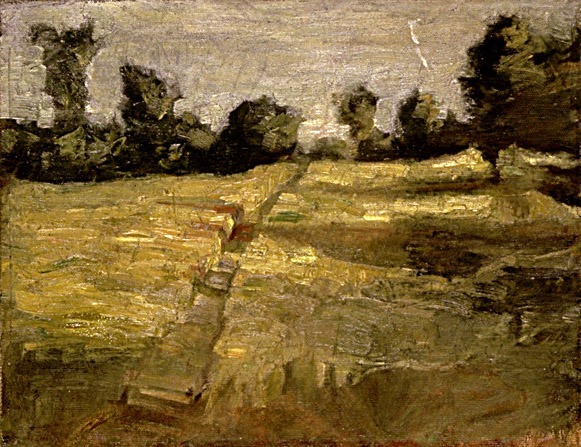
The Field: 1892
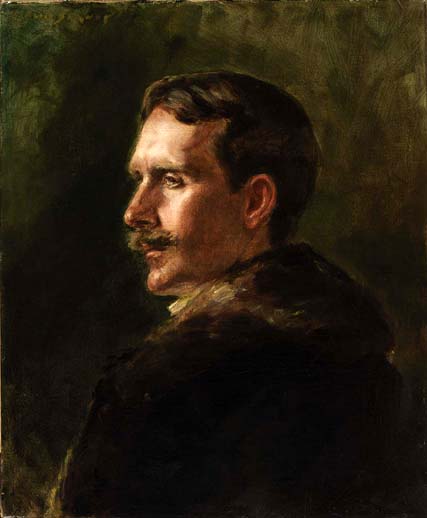
The Fur Coat: 1898
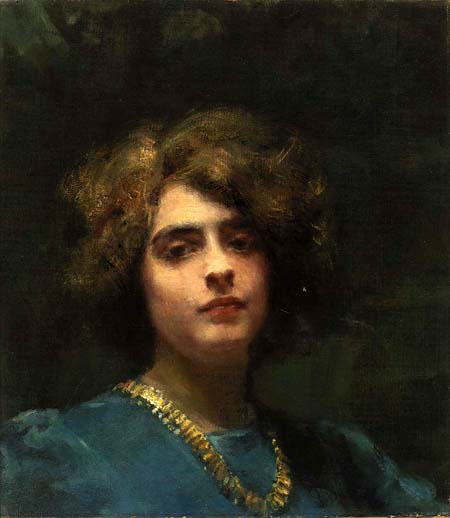
The Necklace: 1898
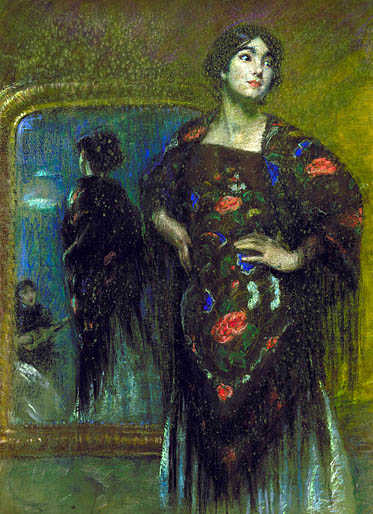
The Spanish Shawl: 1908
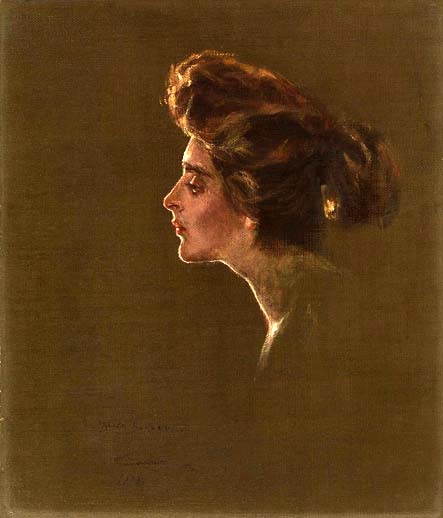
Vers: 1903
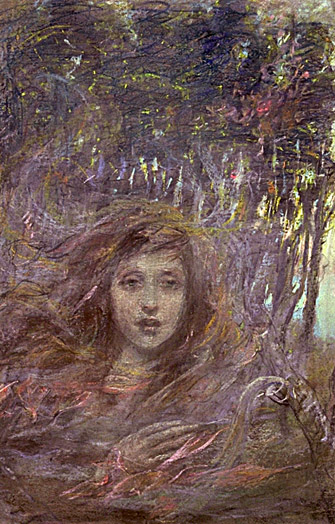
Vision through Woods: 1908
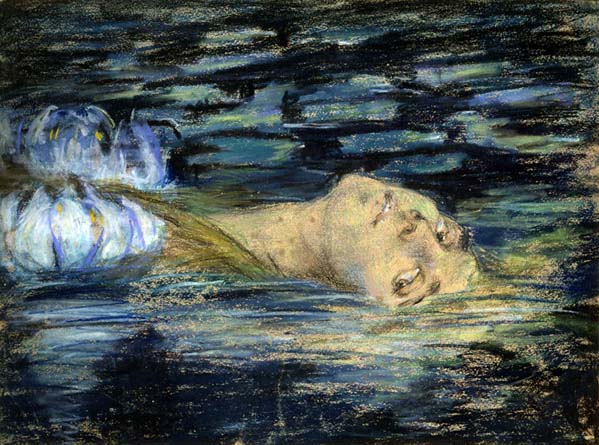
Waterlily: 1900
Waterlily, a portrait of Barney's cousin Ellen Goin, was one of the illustrations for Quelques Portraits-Sonnets de Femmes.
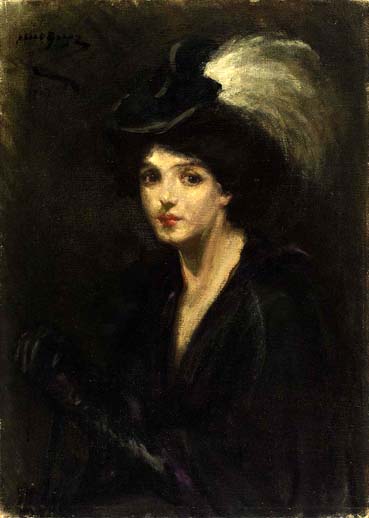
White Paradise: 1900
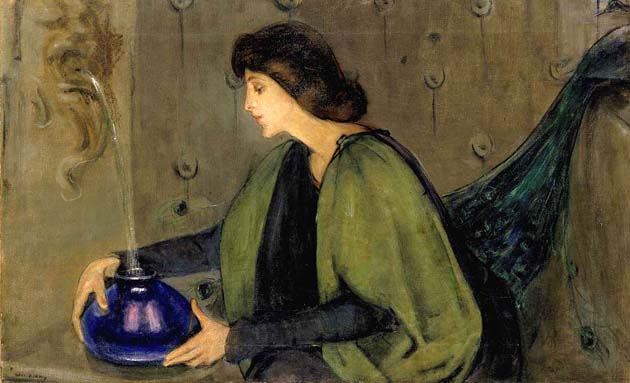
Woman and Peacock Date Unknown
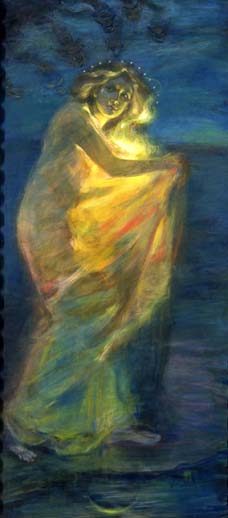
Woman Clothed with the Sun: 1904
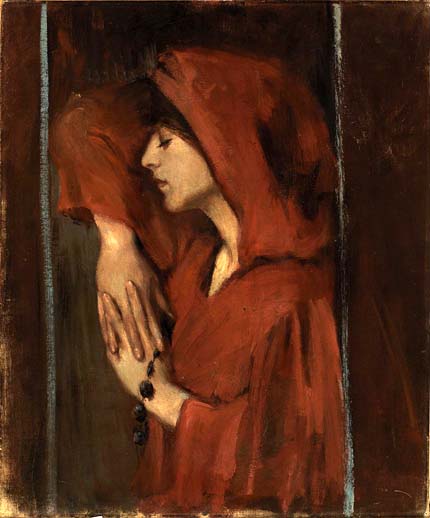
Woman with Red Hood
Date Unknown
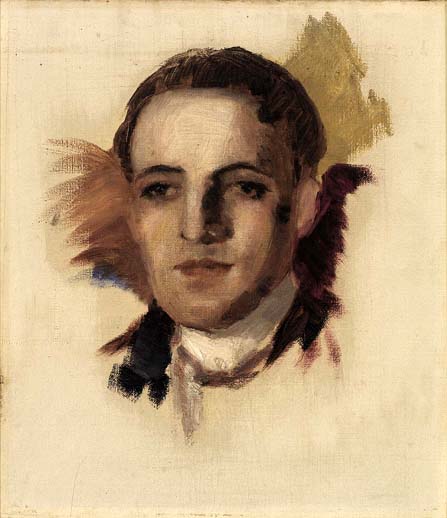
Young Man
Date Unknown

Young Woman in Black Hat: 1927
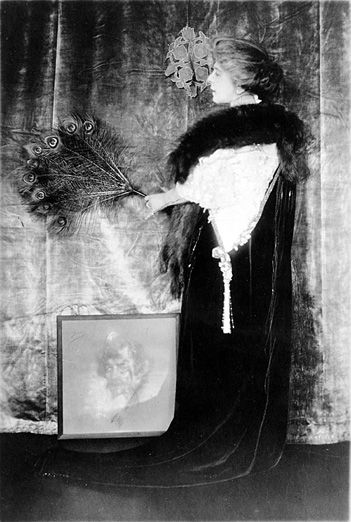
Alice Pike Barney: 1906
Additional Links on Alice Pike Barney
Smithsonian American Art Museum
Baha'i Faith - United States Official Website
Alice Pike Barney Papers, circa 1889-1995
Alice Pike Barney (1857 - 1931) AMERICAN GALLERY
Art by Alice Pike Barney - Museum Syndicate
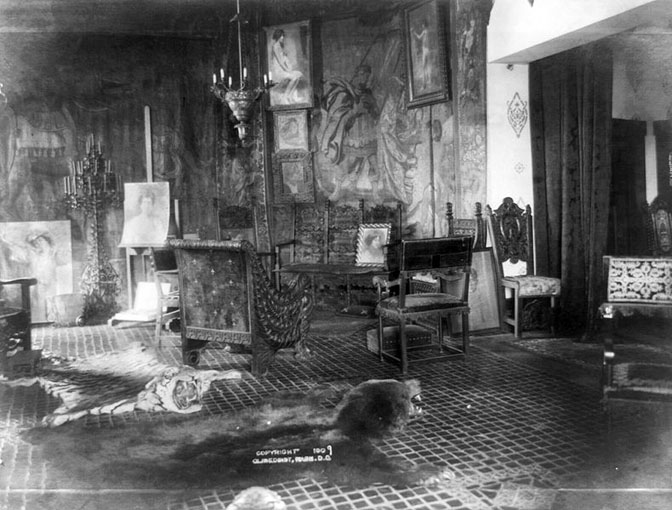
Alice Pike Barney's Studio House (Interior)
.jpg)
Alice Pike Barney's Studio House
(Now the Embassy of Latvia)
Background on the Embassy's Building - Alice Pike Barney House
Return to Pagina Artis
Return to Bruce and Bobbie's Main Page.